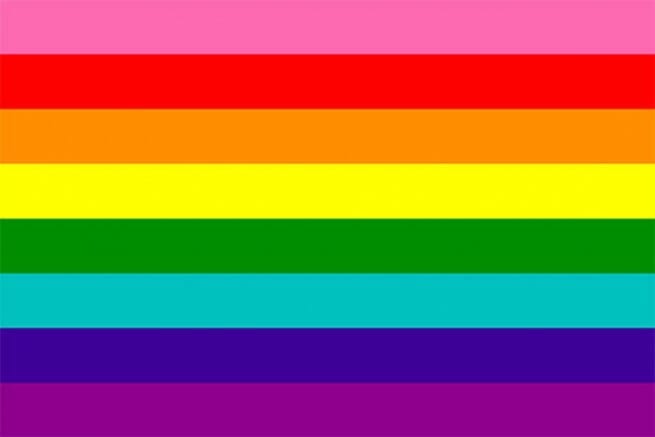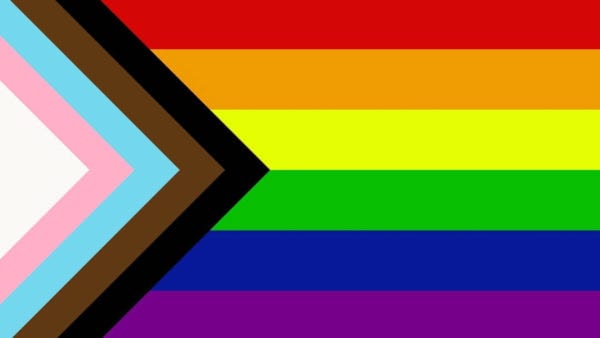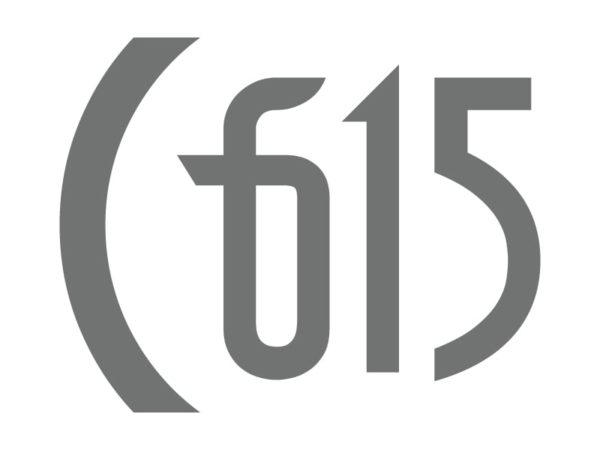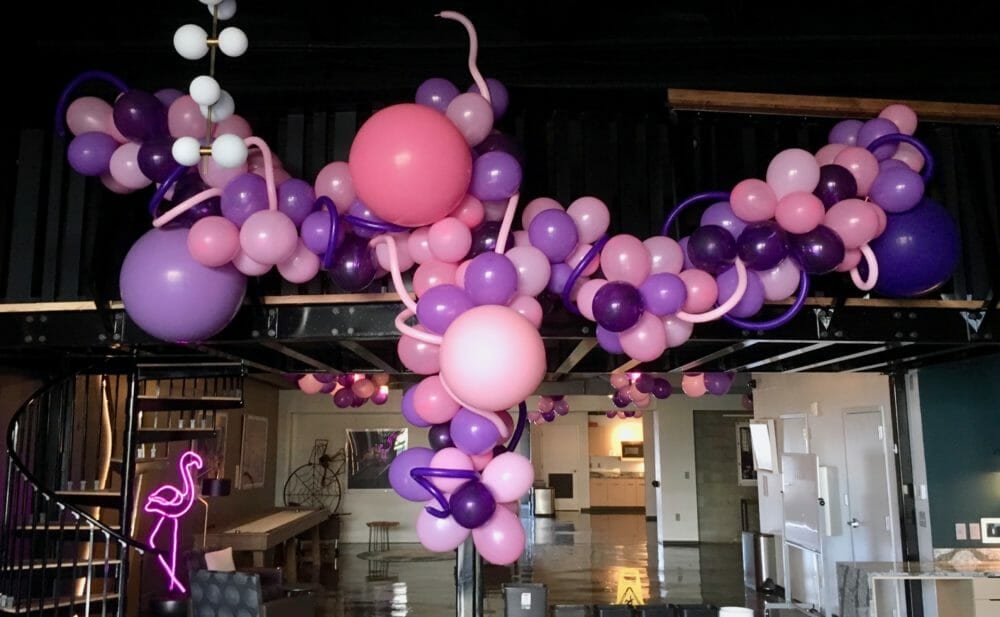History and symbolism lie beneath the prideful colors of the 2019 Pink + Purple Party, hosted at Center 615.
Being a vibrant, creative community of businesses, we are proud members of the Nashville LGBT Chamber. We believe in the chamber’s ethos of fostering equity and diversity in the workplace, opening opportunities for all.
On Friday, June 21st, 2019, Center 615 hosted the annual Pink + Purple Party in our Courtyard and Rec Hall event venues. Believe it or not, the color choice for the pride weekend kickoff party carries more significance than what appears on the surface. Both pink and purple have long histories with the LGBT community, though some histories are clearer and better documented than others.
As pride month and pride festivities wind down, let’s take a moment to revisit the symbolism, history, and reasons why we celebrate pride in the first place, starting with the colors purple and pink.
PURPLE’s association with pride has no definitive origin or meaning, but the most common belief is that purple represents the mixing of gender normative colors pink and blue, pink representing cis-gender femininity and blue representing cis-gender masculinity. Combining the two gender assigned colors both blurs the lines between masculine and feminine and challenges societal gender norms.1
In the purple family, LAVENDER also has close ties to LGBT and gay liberation. The same historical ambiguity and blue/pink color fusion applies to the lighter shade, though lavender holds more significance in its usage with organization names and LGBT community jargon. For example, within lesbian circles in America during the 1930s, lavender became a popular colloquial term to refer to other lesbians.¹
During the early 1970s, the American National Organization for Women (NOW) referred to their active lesbian members as “lavender menaces”—in lieu of the widely controversial term “lesbian”—to prevent the public mind from undermining the feminist organization. However, the lesbian members from NOW embraced the sly moniker and wore shirts emblazoned with the term “lavender menace,” while delivering manifesto-style speeches about homosexual turmoil (even within the feminist community) on stage at the Second Congress to Unite Women in 1970.¹

“Lavender menace” plays on the widely used Cold War term “red menace,” describing the perceived communist threat; while homophobes utilized the label to refer to the gay liberation “threat” of social harmony, queers took the term and flipped it to mock the irrational fears of homophobes.¹
One potential threat to the particularly aggressive members of the homophobic community was an organization who referred to themselves as The Lavender Panthers. A Time magazine article from October 8, 1973, titled “The Sexes: The Lavender Panthers,” dives into the group’s story:
“San Francisco has long had a reputation for permissiveness toward homosexuals, and the police department claims that there are only a couple of isolated incidents of gay beatings on their records. The homosexuals say that that is precisely the point: gays will not file complaints because the police are likely to accuse them of having invited the beating by propositioning someone. The Rev. Ray’s own log shows 300 incidents of muggings and beatings of homosexuals in San Francisco during the past six months, usually by roaming teen-age gangs. A pudgy, confessed coward, Ray says he finally got fed up on the Fourth of July after he had complained to police that some young toughs were setting off fireworks in a parking lot outside his Helping Hands Gay Community Service Center. According to Ray, when the cops arrived all they did was tell the youths he had ratted on them. The toughs proceeded to beat him senseless. Two days later Ray announced that the Lavender Panthers were coming out . . . Besides their goal of halting the attacks, the Lavender Panthers want to gainsay the popular notion that all homosexuals are “sissies, cowards and pansies” who will do nothing when attacked. All of the Panthers know judo, karate, Kung Fu or plain old alley fighting. For gays without defensive skills, the Panthers hold training sessions with instruction from a judo brown belt and a karate expert.”²
PINK, on the other hand, has a more bleak origin story with the LGBT community. Initially, pink was more closely associated with masculinity and blue with femininity. Before the gender color swap, pink symbolized a shade of red, which is arguably a masculine color, while blue symbolized soppy emotions often linked with femininity. The color pink took a turn for the worse during the Holocaust, when Nazis differentiated homosexual men from others interned in concentration camps by requiring them to don an inverted pink triangle badge on their clothing. The Nazi-imposed homosexual symbol became known as the pink triangle.³
Over two decades later, during the gay liberation movement, activists reclaimed the symbol and used it to draw attention to the oppression the LGBT community still experienced from society. In the 1980s, activist group AIDS Coalition to Unleash Power (ACT UP) embraced the pink triangle, but turned the triangle back around to face upwards, to draw attention to the AIDS epidemic marring the gay male community.³

With varying stripe numbers, the PRIDE FLAG is the mascot and beacon of the modern gay liberation and pride movement. The pride flag dates back to 1978, when artist and activist Gilbert Baker created the symbol to embrace lesbian, gay, bisexual, and transgender liberation and diversity. Each stripe in the rainbow flag, which originally had a pink stripe at the top, represents an element supporting LGBT ideologies. Pink symbolizes sexuality, red represents life, orange embodies healing, green indicates nature, yellow equates sunlight, turquoise mirrors magic, blue represents serenity, and purple denotes spirit. In 1979, Pride parade leaders adopted the flag to show solidarity in the San Francisco gay community, following the assassination of the city’s out gay Supervisor Harvey Milk. For the 25th anniversary of the Stonewall riots, Baker created a mile-long pride flag to parade around New York City; and for the 25th anniversary of the flag itself, Baker constructed a mile-and-a-quarter long pride flag for Key West’s Gay Pride parade. The flag extended from the Gulf of Mexico to the Atlantic Ocean.⁴

MORE RECENTLY graphic designer Daniel Quasar included POC and trans communities in the 2018 Progress Pride Flag re-vamp. To build on the pre-existing six stripe rainbow, Daniel adds a right pointing arrow on the left side to signify a need for forward progress, with stripes to include marginalized POC (black and brown stripes) and trans (light blue, light pink, and white stripes) LGBT+ members. The addition’s purpose is “to shift focus and emphasis to what is important in our current community climate.”⁵
While any community’s history embraces colors to represent their cause, the LGBT community seems to especially utilize colors and a colorful aesthetic to illustrate to outsiders their ideals and principles. Now with more knowledge about some of the hues associated with the LGBT community, maybe next year’s Pink + Purple Party will have another layer of meaning and significance for its attendees.
Want to host an inclusive event on our campus? Schedule your tour today!
**We are now offering virtual tours to play our part in social distancing
Want to learn more about Center 615 and our services? Click Here.
Sources:
1. Stewart, William. Cassell’s Queer Companion: A Dictionary of Lesbian and Gay Life and Culture. Cassell, 1995. Page 143.
2. “The Sexes: The Lavender Panthers.” Time Magazine, October 8, 1973. http://content.time.com/time/printout/0,8816,908008,00.html
3. Stewart. Cassell’s Queer Companion. 194
4. Humm, Andy. Gerstner, David A., ed. Routledge International Encyclopedia of Queer Culture. Routledge, 2006. Page 67.
5. Quasar, Daniel. “Progress Initiative.” Quasar Digital, https://quasar.digital/shop/progress-initiative/?v=a284e24d5f46








1 thought on “Why Nashville Celebrates Pride | LGBT Flag History”
So interesting! I had no idea!